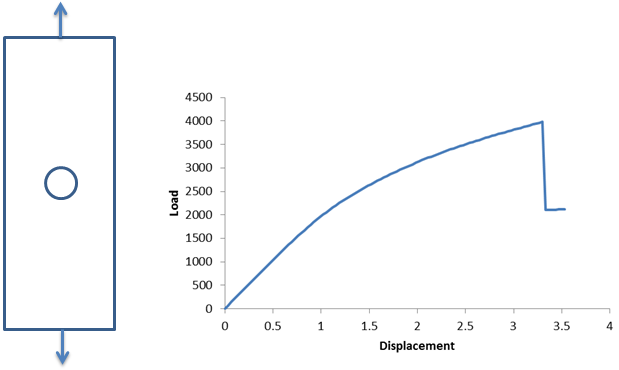Examine Results with Inventor Nastran In-CAD
This section discusses the use of Inventor Nastran In-CAD to examine results from the structural analysis generated by Advanced Material Exchange. It is assumed you are familiar with using In-CAD to view finite element results and perform any necessary post-processing. This section will focus on results specific to Advanced Material Exchange.
Use Contour Plots to View Advanced Material Exchange Results
There are seven results produced by Advanced Material Exchange which can be examined on a contour plot of the model. Review the State Variable Outputs page for a short description of each result.
Contour plots are usually the most appropriate means of examining the distribution of the state variables. To generate a contour plot in Inventor Nastran In-CAD:
- Click Results > Load Results.
- Browse for the .FNO results file and click Open.
- Click Results > Contour.
- Use the legend to switch to the AME result type.
At this point, any of the seven Advanced Material Exchange results are available to view on the contour plot.
Three of the more useful results are the damage state, the matrix tangent modulus, and the matrix effective stress. The damage state result represents the degradation status of the Gauss point locations. A value of 1.0 indicates an undamaged material (no failure). A value of 2.0 indicates the Gauss point location has failed and the material stiffnesses have been degraded, allowing failure to progress to the surrounding locations.
The matrix tangent modulus result represents the tangent elastic modulus of the matrix material. When the tangent stiffness decreases, the structure is undergoing plastic deformation, or softening.
The matrix effective stress provides an indication of how close the material is to failure. When the matrix effective stress exceeds the maximum effective stress for the von Mises failure criterion, rupture will occur.
Create a Load-Displacement Plot
To detect global structural failure, or to associate a particular distribution of damage with a decrease in overall structural stiffness, we must first examine the relationship between global structural force and global structural deformation. This type of relationship is best examined using a simple 2-D plot of force vs. deformation.
Consider the tensile loaded coupon specimen shown below, machined from an injection-molded plaque. To determine the point in the load history when ultimate failure occurs, we must create a load-displacement curve. By summing the reaction forces on all of the loaded nodes, we can produce the load-displacement plot shown below. We can see a significant amount of plasticity introduced to the structure beginning at a displacement of 1. The plastic deformation continues until we see a large load drop at a displacement of roughly 3.25. This sudden load drop indicates the structure has experienced a catastrophic failure.
If we were to create a contour plot of the damage state for this model, we would likely see that several elements surrounding the hole have a value of 2.0, indicating catastrophic failure at a displacement of roughly 3.25.

